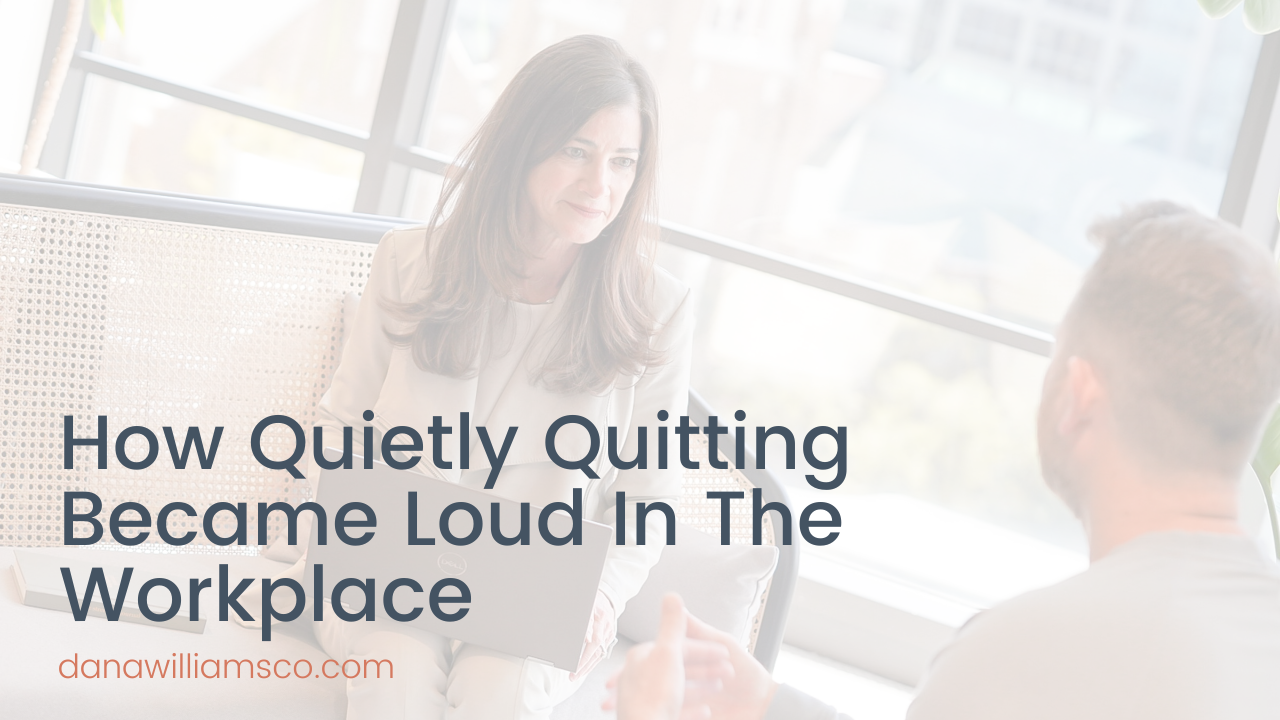How Quietly Quitting Became Loud In The Workplace
Sep 01, 2022
At 5 p.m., close your laptop. Stick to your assigned tasks. Have more time to spend with family. While there are many examples used to describe the latest workplace trend of "quietly quitting” it is not new. It just has a new name.
Quietly Quitting is part of a larger reevaluation of how we design our work around our lives instead of how we design our lives around our work.
In order to lead well during this time, we need to understand that we have four generations working in the workplace and each requires something different. In his book, A New Kind of Diversity, Tim Elmore explains that we can create healthy work environments in multi-generational workplaces by “leveraging strengths each generation has.”
Baby Boomers (born 1946–1964) - 76 million - taught to compete and win from their parents who were children before the second world war.
Generation X (born 1965–1980)- Baby Busters -Smaller generation-work hard and you will succeed. Had to fight harder to win because baby boomer ahead competing for spots
Millennials (born 1981–1995) – 80 million strong- digital customization – life is full of choices.
Generation Z (born 1996–2010) – deserves empathy from leader – 3 economic downturns. As Gen Z is entering the workforce, the idea of quiet quitting has gained traction as Gen Zers deal with burnout and never-ending demands
If you are a leader and you are experiencing “quiet quitting” from your employees, here are three resources I recommend from Gallup:
- Seek to know their unique talents and needs. I love the CliftonStrengths full 34 (link here)assessment as it is backed by science and helps each person on the team know their unique talents.
- Ask these three questions weekly of your people in your quick connect from Gallup’s Q12 Engagement Survey (reference link here).
Do you know what is expected of you at work?
Do you have the materials and equipment to do your work right?
Do you get to do what you do best everyday?
Make sure your employees are thriving mentally - share with them the five key elements of wellbeing - career, social, financial, physical and community. These are based on Gallup’s research of over 100 million interviews in the global marketplace (you can find more information in their published boo Wellbeing at Work). Have your employees rank themselves 0 (worst possible life) -10 (best possible life) in each of these areas in this order:
- Career - You like what you do everyday
- Social - You have meaningful friendships in your life
- Financial - You manage your money well
- Physical - You have energy to get things done
- Community - You like where you live.
I recommend training your employees to review their wellbeing scores at least monthly to quickly assess what areas they need to focus on in wellbeing and to help you develop better strategies so your teams can thrive.
Last, I encourage you as a leader to get a coach for yourself that can guide you in leading yourself and other’s based on your strengths. Creating a culture of engagement in the workplace happens daily. So I created The Strengths Journal www.thestrengthsjournal.com to help leaders and teams manage themselves and their well being daily. I also have a six week bootcamp for leaders and individuals to help them unlock their talents, create their personal brand statement and develop goals based on who they are www.strengthsonpurpose.com
This is an exciting time for strong resilient leaders to lead the generations and change the world.
Sign up for the Weekly Leader's Digest
Each week we'll send you easy action items you can incorporate into your daily work routine to help you become a better leader.
By signing up, you are joining the Dana Williams Co. email list. We never sell our data. You can unsubscribe at any time.

